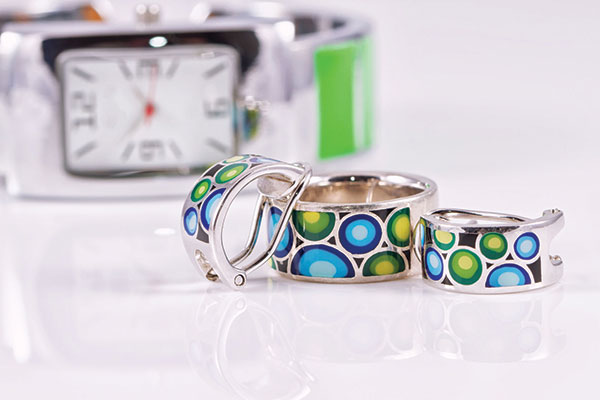Allergies Getting Under Your Skin?
Did you know that nickel is one of the most common causes of allergic skin rashes? In fact, it is estimated that more than 18 percent of people in North America are allergic to nickel, including 11 million children in the U.S., making it a widespread public health concern.
“If you have a nickel allergy, the best way to avoid symptoms is to avoid objects containing nickel,” says board-certified dermatologist Jenny Eileen Murase, MD, FAAD, assistant clinical professor of dermatology at the University of California San Francisco Medical Center in San Francisco, CA. “However, this can be challenging, since nickel is present in many common household items.”
Choose jewelry carefully. It’s common for a nickel allergy to develop from wearing jewelry containing nickel. Earrings, earring backs, and watches are some of the biggest culprits; however, necklaces, rings, and bracelets containing nickel can also trigger symptoms. To avoid exposure, only wear jewelry that is nickel-free, hypoallergenic, or made from metals such as surgical-grade stainless steel, 18-, 22-, or 24-karat yellow gold, pure sterling silver, or platinum. In addition, wear watchbands made of leather, cloth, or plastic. It’s also common for belt buckles, bra hooks, and metal buttons, zippers, and snaps to contain nickel.
Check your clothing. It’s also common for belt buckles, bra hooks, and metal buttons, zippers, and snaps to contain nickel. If your clothing has these, replace them with ones that are plastic or plastic-coated. You can also create a barrier between these items and your skin by coating the items with clear nail polish. However, the nail polish will need to be reapplied often.
Cover electronics. Recent reports suggest that some electronic devices, including cell phones, laptops, and tablets, may contain nickel. To avoid exposure, always use a protective cover on your electronic devices.
Substitute household objects containing nickel with objects made of other materials. Examples include brass keys, titanium-coated or stainless steel razors, pots and pans with silicone handles, and titanium or plastic eyeglass frames.
Avoid foods containing nickel if you are extremely sensitive to nickel. Some foods that contain high amounts of nickel include soy products (such as soybeans, soy sauce, and tofu), licorice, buckwheat, cocoa powder, clams, cashews, and figs.
“Rashes caused by a nickel allergy are not life-threatening, but they can be uncomfortable,” says Dr. Murase. “If you think you have an allergy, or if you have a rash that blisters, becomes infected, or comes and goes, see a board-certified dermatologist for the proper diagnosis.”
Source: American Academy of Dermatology, aad.org
This article was originally published in Coping® with Allergies & Asthma magazine, Spring/Summer 2016.


